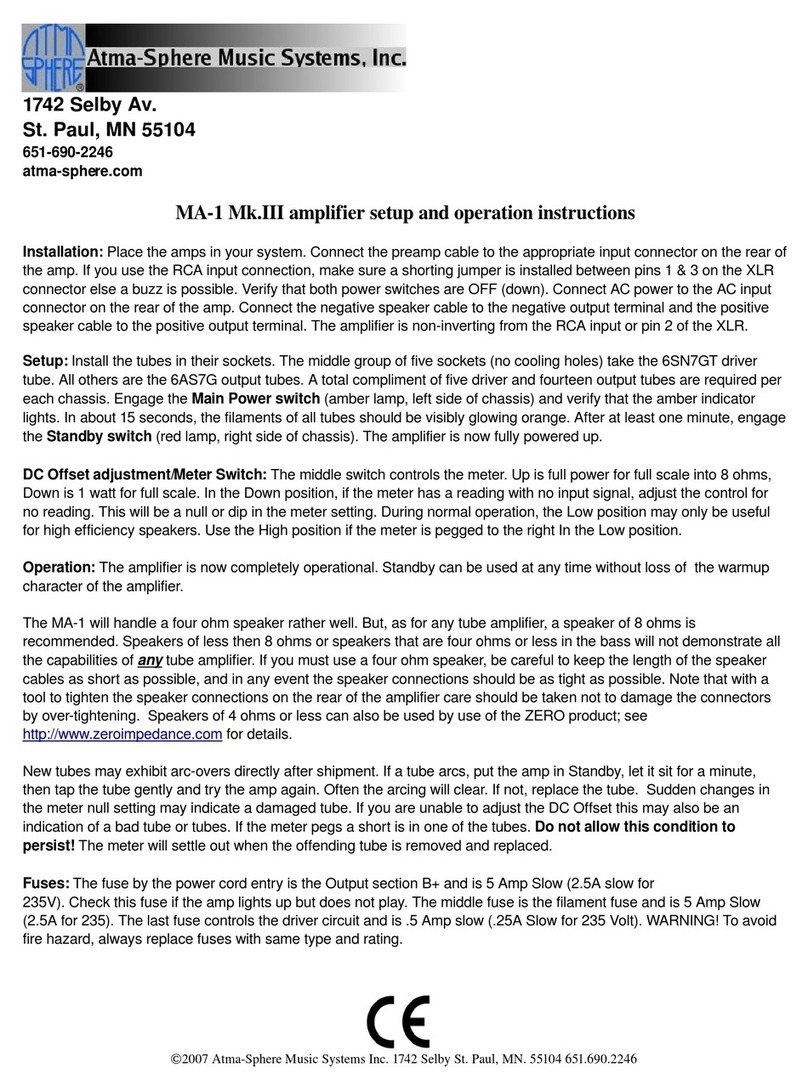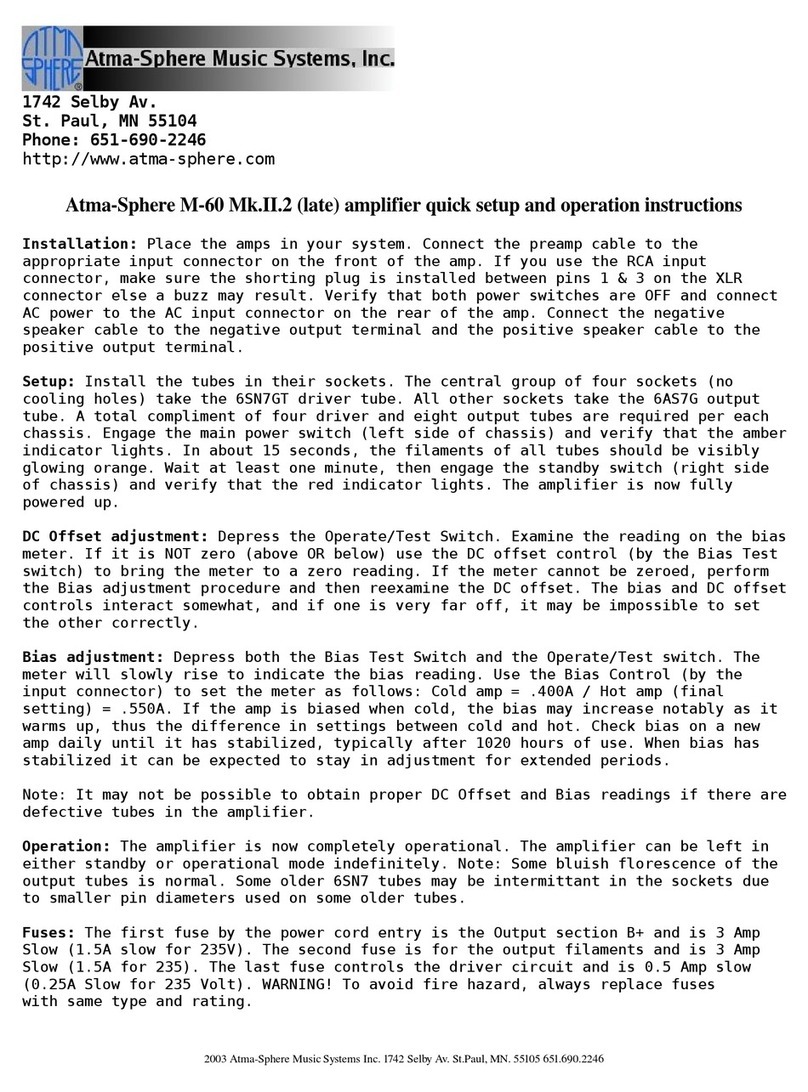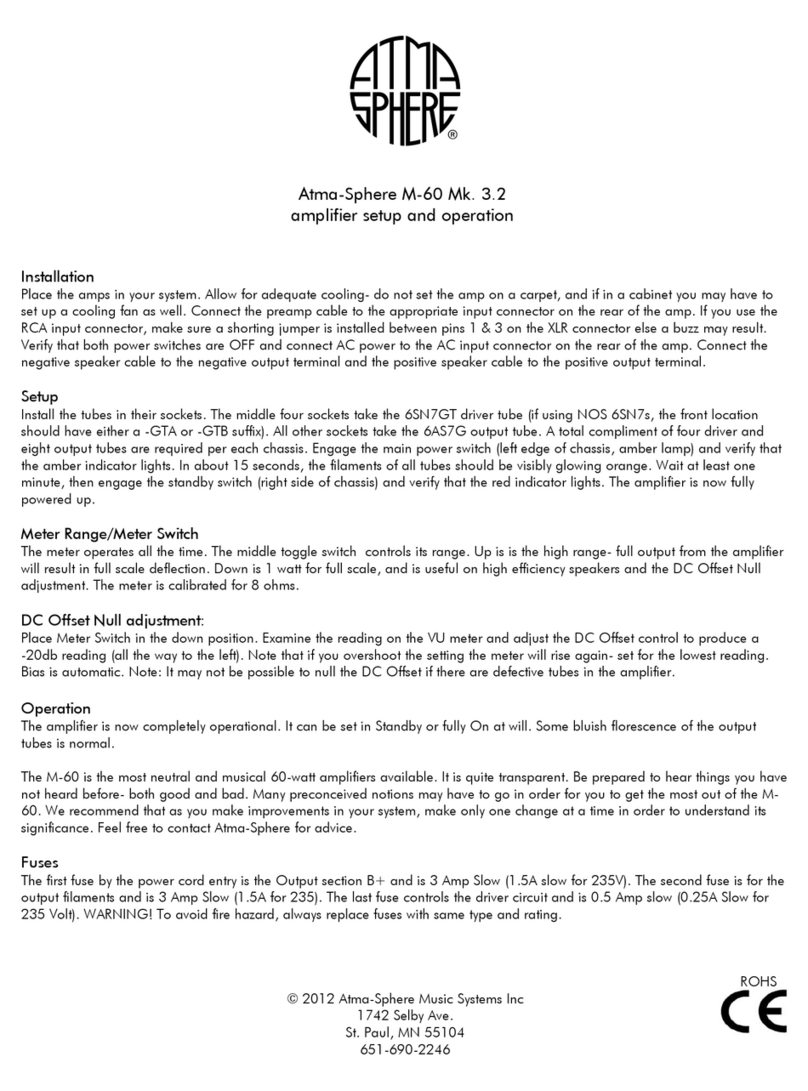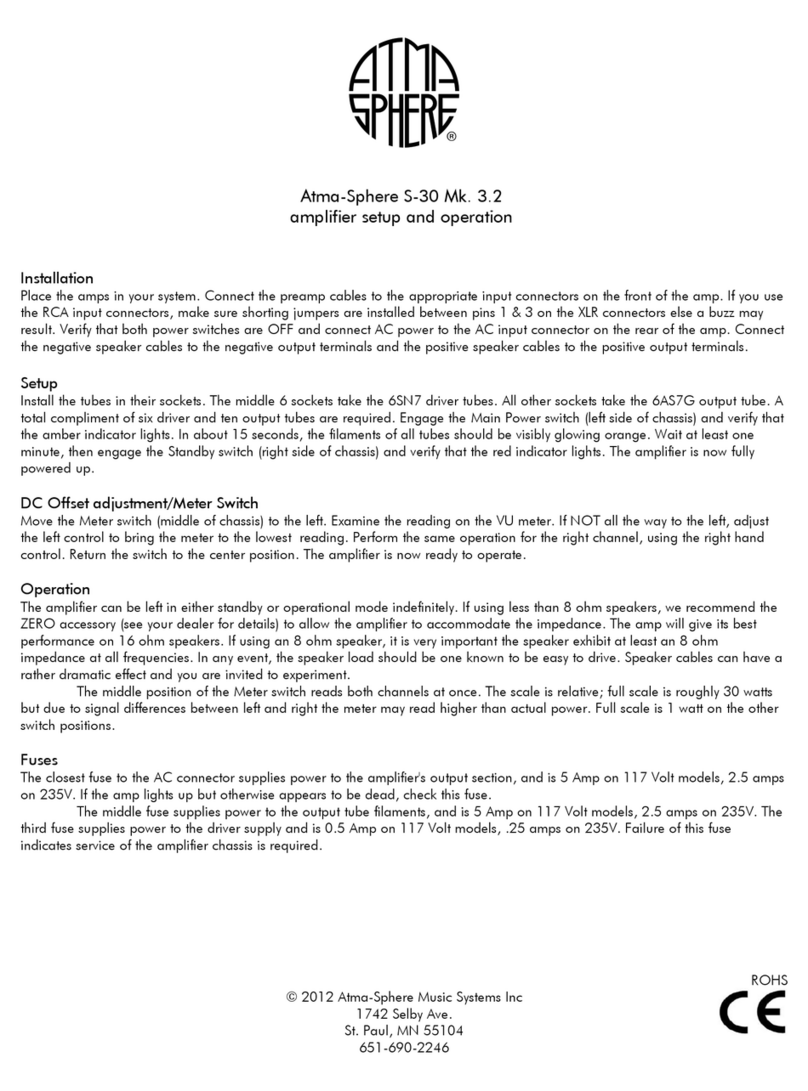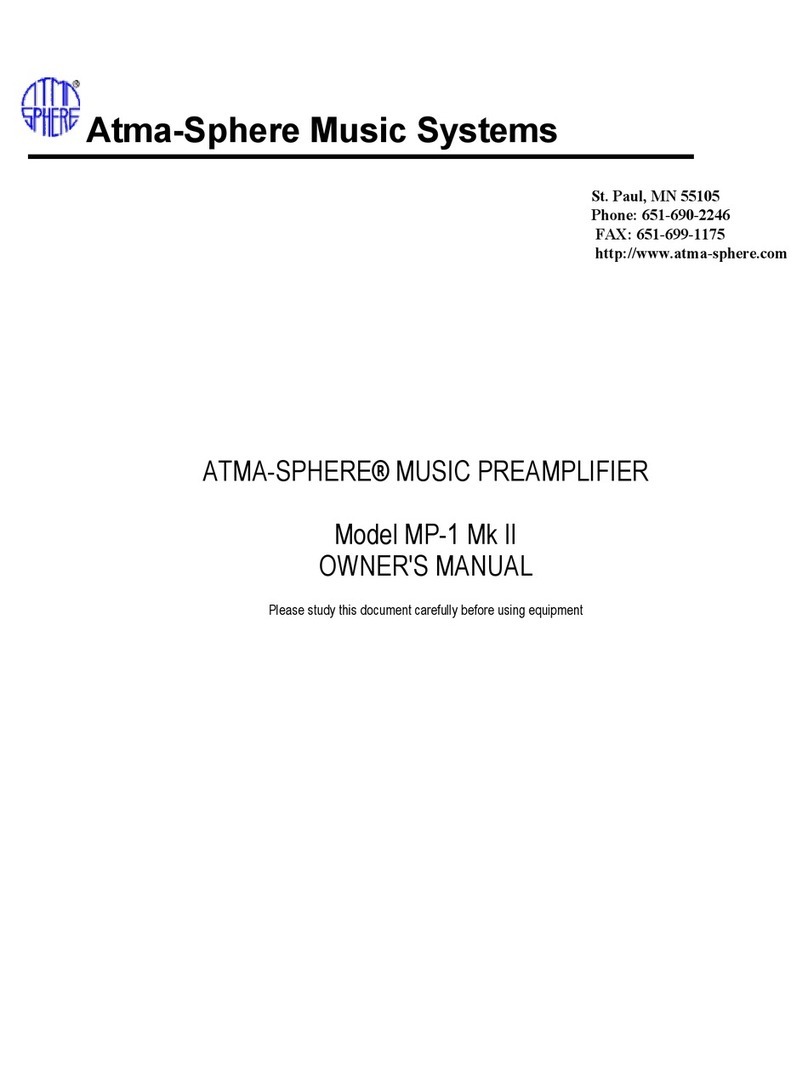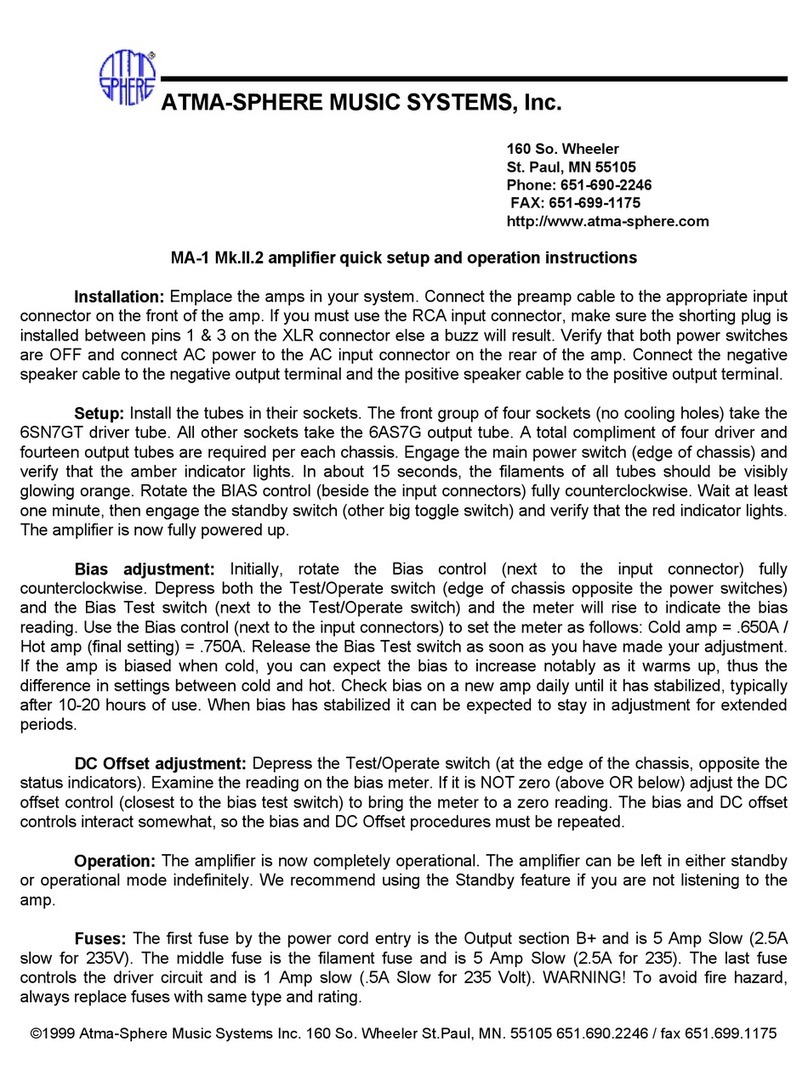
MUSIC PREAMPLIFIER SET-UP AND OPERATION
Unpack the preamplifier carefully and save the packaging containers for future shipment if required.
Place the tubes in the appropriate sockets, if required, as shown in the tube chart elsewhere in this
manual.
During operation, the MP-3 gets warm. Adequate ventilation is mandatory. If the preamplifier is to be
placed in a shelf or rack mount system, allow for at least 2 inches of open space above the unit. Make
sure that the preamplifier is at least a foot away from any power supply, to avoid hum problems.
After the preamplifier is properly positioned, make sure that the power switch is in the OFF position.
Connect the cables for the various components to be used with the preamplifier.
For sonic performance reasons, the MP-3 does not use a muting circuit! Allow the preamplifier to
warm up and stabilize before energizing your power amplifiers. A muting circuit is not used as it
would interfere with the servo-loop operation in the output section of the preamp. Its presence in the
circuit would be audible as well. Although the DC offsets generated during warmup are low level, they
could be a problem for some amplifiers and speakers.
══════════════════════════════════════════════════════════════════
WARNING! DO NOT TURN ON THE AMPLIFIERS IN YOUR SYSTEM UNTIL THE PREAMPLIFIER IS
WARMED UP AND STABILIZED! DAMAGE TO SPEAKERS, AMPLIFIERS OR BOTH MAY RESULT!
══════════════════════════════════════════════════════════════════
Get in the habit of turning down the volume or switching to an unused input anytime you turn your
amplifier on, when you change a record, etc.
After the preamplifier is turned on, it takes about 30 seconds before it is ready for use. During the
warmup of the preamplifier, one or both of the "DC OFFSET" LEDs on the front panel may light up. This
indicates that the servo circuit has detected a DC voltage at the output of the preamp and is trying to
correct it. If the indicator stays lit for more than a minute, a fault is indicated and the preamplifier
must be turned off immediately to prevent damage to associated equipment. It is normal for the
indicators to flicker at high volume settings. The preamplifier will sound significantly better after about 45
minutes of operation.
OPERATING NOTES
Normally the preamplifier can be left on all the time. Be sure to provide for adequate ventilation. The
12AT7 phono tubes should be checked every 6 months if the unit is left on continuously. The unit will
sound substantially better three hours after turn-on.
Use the MP-3 with a low impedance (600 ohm) load at the input of the power amplifier if possible. Such
practice results in reduced possibility of hum and buzz in most cases.
Invariably you will have to adjust the GAIN TRIM for proper soundstaging effect, because the MP-3 is a
zero feedback design. Various tubes will result in differing amounts of gain between left and right
channels. Operate the control SLOWLY. The GAIN TRIM controls are not in the audio path. They may
generate a temporary DC offset while they are operated. This effect will vary depending on the balance
of the sections in the 12AU7 used in the high level section.
Due to the nature of the MP-3, expensive cables between the preamplifier and power amplifier are less
